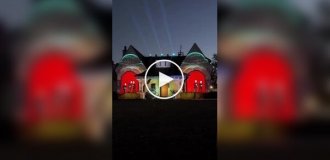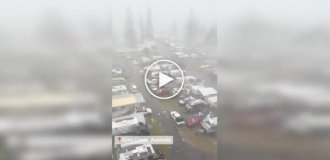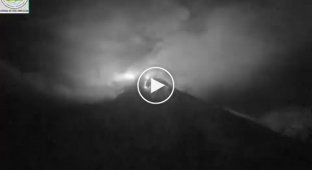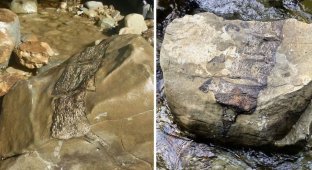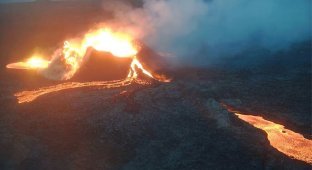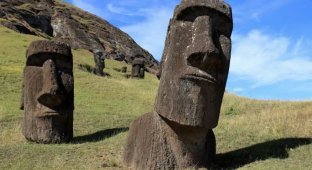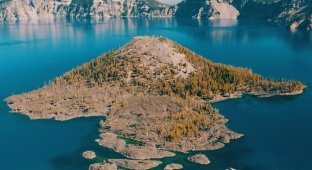Mount Tarawera is a volcano located on the North Island of New Zealand. 
It consists of a series of lava domes. Today they lie in ruins, and huge chasms gape on the slopes. This happened as a result of a single, but truly catastrophic event - a terrible eruption in 1886. It was one of the largest eruptions in New Zealand, killing approximately 150 people. 
Volcano Tarawera
The chasms stretch from northeast to southwest for about 17 kilometers. The main domes include the Ruawahia, Tarawera and Wahanga domes.
There are several lakes, including Tarawera, which were completely changed along with the entire landscape as a result of the eruption in 1886. The Tarawera River flows northeast along the northern slope of the mountain. There have been many eruptions of this restless giant, but none have been as destructive as the one in 1886.
Interestingly, if you believe the local legend, the spirits of the dead may have tried to warn people.
History of volcanic eruptions 
Tarawera and its sister volcanoes have been erupting for thousands of years, although with long periods when the turbulent peak subsided. One of the first eruptions in this region was the Okareka eruption approximately 21,900 years ago.
It is believed that it led to the formation of a cloud of ash and debris with a volume of up to 12 cubic kilometers. It is believed that the clouds formed over several days or even weeks. 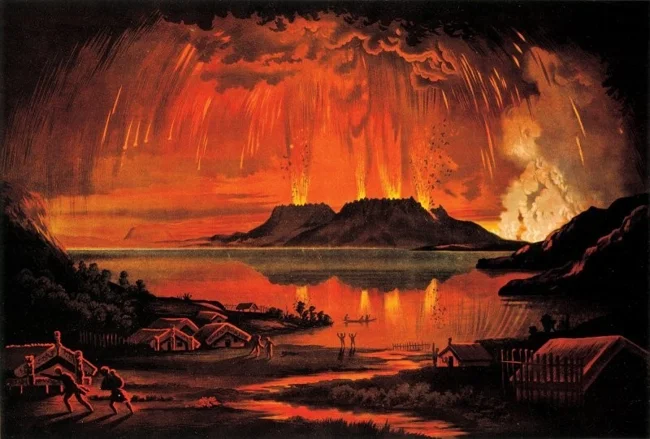
Five thousand years later, Rereuhakaitu erupted. It was twice as weak as the Okareka eruption. But it led to the formation of numerous domes that can still be seen today. The volume of lava erupted from the volcano was estimated to reach 2 cubic kilometers.
Another 4,000 years later, Waiohau erupted with about the same amount of lava as Reriuhakaitu. Once again, the volcano left its mark on the landscape, creating the Kanakana and Vostochny domes. 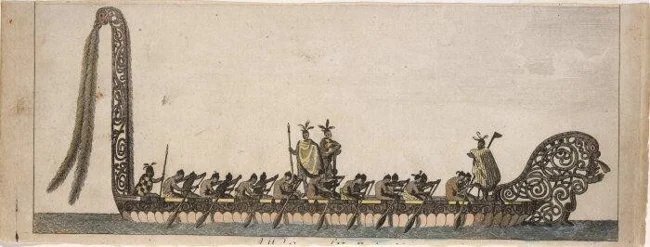
Traditional depiction of a New Zealand war canoe
However, by this point the mountain range had become too weak due to the destruction caused by numerous eruptions. There is evidence of structural destruction of the mountains surrounding these volcanoes, although some of what these eruptions caused has been lost due to subsequent events.
Finally, Mount Kaharoa erupted. This eruption dates to around 1314 BC, just a few years before the Maori settled here in 1280 BC. This eruption had several stages.
This may be the largest eruption to occur in the New Zealand area. 
Lake Rotomahana and White Terrace
These eruptions were spectacular and could cause enormous damage, but they all seem to have occurred when there were no people in the area. This was the case until 1886.
In 1886, tourists flocked to Lake Tarawera. People came from all over the world to spend time on the beautiful shores and experience the wonders of the Pink and White Terraces.
The area was very rich in volcanic and geothermal beauty and was dotted with volcanic cones formed as a result of previous eruptions. The geothermal and volcanic landscape played an important role in the history of this eruption. Many harbingers and omens were recorded pointing to the coming tragedy. One of them was a ghostly canoe. 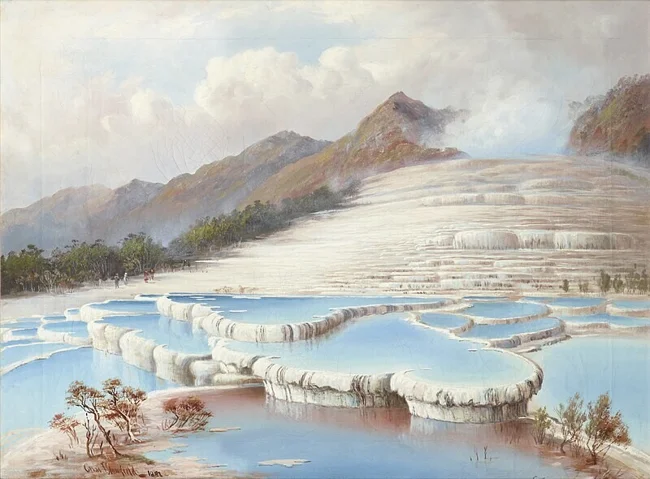
White Terraces, 1884
The story often begins with the shadow of a burnt peak appearing on Mount Tarawera. The mountain casts a shadow on the sun. An ominous sign, perhaps even to the trained eye of a modern volcanologist - a clear sign of danger. But despite this, eyewitnesses later said that tourists still flocked here in droves.
The next sign was perhaps less scientific. Many claimed to have seen a ghostly boat with two rows of passengers on the lake. One of them rowed, and the others stood over him in linen robes, bowing their heads. 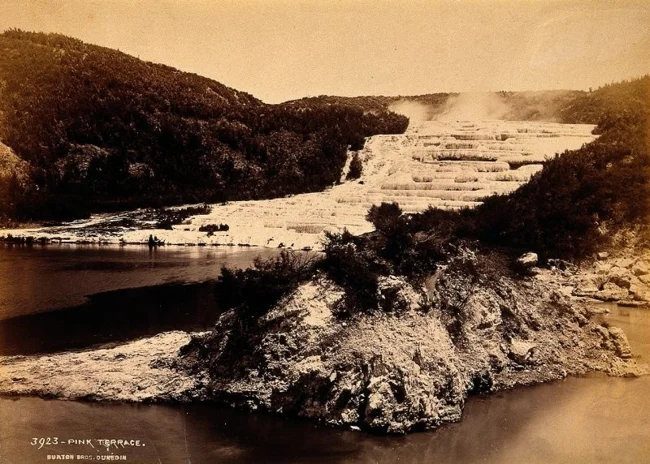
Pink terraces
Eyewitnesses claim that their hair was loose (a Maori custom in the event of death) and decorated with huia and egret feathers. According to Maori traditions, these were the souls of the departed, transferred to the mountain of the dead.
However, those who were on the lake and approached it discovered that there was no canoe on the lake. It would look like a flight of fancy if it weren’t for the descriptions of people who had never seen such a boat before.
This story would have remained a legend if not for the huge number of people who claimed to have seen a ghostly canoe. This story has survived to this day. 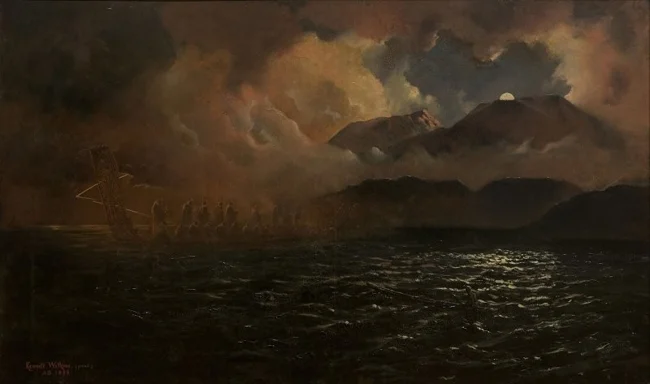
A woman named Mrs. Size, a tourist on board a real boat on the lake, wrote in a letter to her son that all the indigenous Maori on the boat and those who lived permanently in the area had never seen such a boat. And she definitely shouldn’t have been on the lake that day.
Many eyewitnesses confirm that there was a boat. And these people were not superstitious. Subsequent events led us to believe in an omen. The first sign that something was wrong was that the water in the lake began to rise quickly and then disappear even faster. Then a cloud of white steam appeared over the volcanic peak, and many guides decided that this was not a good sign.
Combined with the ghostly canoe, this caused people to panic greatly. Fortunately, nothing happened that day. The catastrophe did not occur for another 11 days. But then Tarawera erupted. 
Modern Maori
On the night of the eruption, the mountain released fiery fountains that soared into the sky and rained ash on nearby settlements. Three villages were completely destroyed and about 150 people were killed.
The eruption was preceded by more than 30 earthquakes, the intensity of which increased until the mountain began to erupt at 2:45 am. The strongest explosion occurred at 3:30 am, destroying villages within a radius of 6 kilometers, as well as the Pink and White Terraces. These terraces were famous New Zealand natural attractions but were destroyed by the explosion.
Fortunately, almost 125 years after the eruption, a small portion of the Rose Terraces has been rediscovered beneath Lake Rotomahana. They were known about them back in 1859, when they were discovered by geologist and geographer Ferdinand von Hochstetter, but the results of these studies were lost and restored only in 2016-2019. 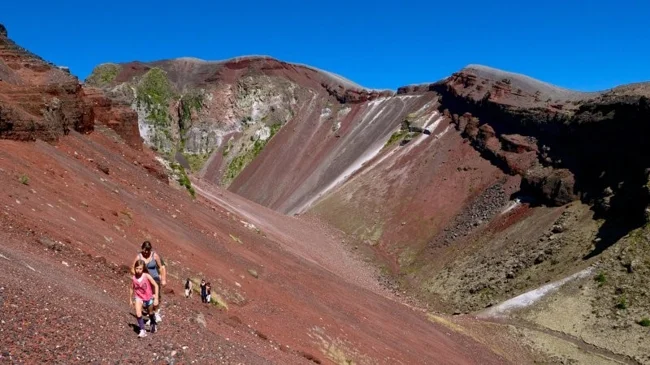
As a result of research, it turned out that there are pink, black and white terraces on the shores of the lake, which means that not everything was destroyed as a result of the tragic eruption.
Many skeptics claim that the ghostly canoe was just a freak reflection of the fog on the lake. But to those who saw it, and to the local Maori, it will always be known as Waka Wairua - the spirit canoe that warned those who saw it of the eruption, if only they were smart enough to understand.
Add your comment
You might be interested in:




